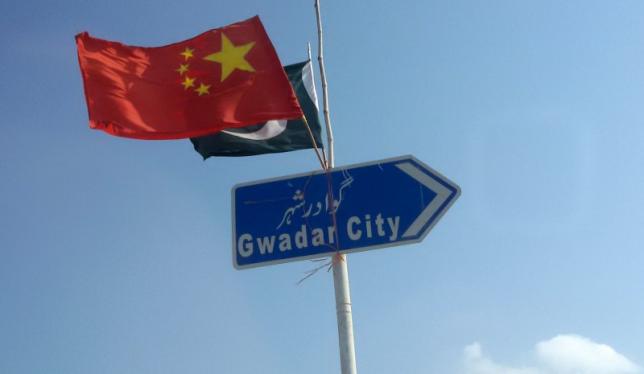
The China-Pakistan Economic Corridor (CPEC) is a transformative initiative. It is the result of evolution of historical ties since 1950 and continued work on an all-inclusive economic partnership since the early 2000s.
It encompasses a wide range of programmes, which are not limited to economic interests but are also vital for social development. It has created numerous opportunities for Pakistan, especially during the most difficult times.
It has helped to manage load-shedding, which was costing $4-5 billion per year. It has created 75,000 jobs for locals, especially in marginalised areas like Thar and Gwadar.
Thar is a very interesting case. Once it was a centre of high child mortality rate and now it is turning into an energy hub. More than 100 small and medium enterprises (SMEs) have directly benefited and expanded their businesses in the area.
Gwadar Port is fast turning into a hub of regional trade and operation, and Afghan transit trade has already started from there.
Investment in the transport sector is helping to tackle the annual 4-5% loss due to bad condition of roads and highways. The first phase of CPEC has laid the foundation for revival of economy by increasing the national gross domestic product (GDP) by 2%.
The second phase has its own advantages and paybacks. It has kicked off with the expansion of areas of cooperation and both countries have signed an agreement for social development.
Sectors identified for investment include skill development, healthcare, education and poverty reduction in Pakistan. Memoranda of understanding (MoUs) signed for agricultural, scientific and technological cooperation reflect the second wave of expansion.
The MoUs have been designed to cater to present and future needs of Pakistan, especially the demand from fourth industrial revolution.
Implementation of CPEC projects has accelerated with the establishment of CPEC Authority. A good number of projects has started, especially in the areas of energy, transport, social uplift and agricultural development.
Investment in dam construction and hydroelectric power production is the game changer as it will assist Pakistan in tackling issues of expensive electricity, water shortage and lack of job opportunities.
Diamer-Bhasha dam alone will create 16,000 jobs. It will have water storage capacity of 6.4 million acre feet (MAF), supply water for irrigation to 1.2 million acres and produce 4,500 megawatts of cheap electricity.
Dams will also ensure availability of water during the lean period of water supply and mitigate the impact of floods. The government has started construction work on Azad Pattan and other hydroelectric power projects.
ML-1 railway line is another landmark project, which will completely change the face of Pakistan Railways.
Industrial cooperation is another area where work has been accelerated, which mainly comprise the setting up of Special Economic Zones (SEZs). The government of Pakistan, through the CPEC Authority, has stepped up work on the SEZs.
The direct and indirect contribution of these projects to job creation will be huge. Jobs will be created through the construction industry, allied sectors and enhanced industrial, business and agricultural activities.
According to the World Bank, around four million jobs will be created due to CPEC till 2030. Islamabad can also use this opportunity to revive Pakistan Steel Mills as there will be huge demand for steel and steel products during the construction of dams and execution of ML-1 railway project.
A policy framework is in final stages to facilitate industrial cooperation. The Board of Investment is holding consultation with different stakeholders to finalise the framework.
Paybacks
Forecasts suggest that future paybacks will be immense. Different World Bank reports including the “Common Transport Infrastructure: A Quantitative Model and Estimates from the Belt and Road Initiative”, “Belt and Road Initiative: Economic, Poverty and Environmental Impacts”, “Belt and Road Economics: Opportunities and Risks of Transport Corridors” forecast that CPEC being a flagship project of the Belt and Road Initiative (BRI) will bring enormous benefits to Pakistan till 2030.
According to the reports, Pakistan’s GDP will be enhanced by 6.43% due to investment in infrastructure projects. GDP can be increased by 14.03% if the investment is followed by reforms, improvement in ease of doing business and trade facilitation.
CPEC will also give a 9.8% boost to trade. Welfare gains will be around 5.18% without reforms and 10.48% with reforms.
The biggest gain will be for the unskilled labour. Poverty reduction will be another positive outcome as 1.1 million people are estimated to come out of the poverty trap.
Averting threat
Owing to its massive economic and social dividends, CPEC has drawn opposition and propaganda from the opponents.
Since the inception of the project, enemies of Pakistan have launched a smear campaign and are trying to sabotage it by posing serious security threats. Chinese companies and workers have been targeted to demoralise them and hinder progress on the project.
Pakistan and China are cognisant of all this and have put in efforts to thwart the security threat.
Pakistan has set up a new security division. In the first phase, it has deployed 12,000 army personnel for security duties. More than 32,000 security personnel have been trained to protect Chinese workers and project installations.
Security arrangements are mostly focused and derived from requirements of the first phase of CPEC. In the second phase, the requirement of security forces and arrangements will be diversified and multiplied. SEZs, ML-1 and other projects, which will be spread all over the country, will require more security personnel.
There are two specific areas which require special attention of Pakistan and China in future. These are cultural differences and lack of or little understanding of security dynamics and requirements of Pakistan by Chinese workers and companies.
Cultural differences will be the real challenge. We know Pakistani and Chinese cultural practices differ in many areas, especially in the religion and way of living.
As there will be close and free interaction between Pakistani and Chinese workers, the lack of knowledge or understanding of each other’s culture can create misunderstanding. If it is not tackled properly, it can be a source of deeper security challenges.
Efforts should be made to tackle future security scenarios. First, Chinese companies and workers should be sensitised about Pakistan’s culture. Second, Pakistani people should be sensitised about the Chinese culture. Third, local laws and policies should be reformed to tackle issues pertaining to transit trade, application of laws to foreigners working in Pakistan, and role and responsibility of local police.
It is pertinent to mention that the role of police will be very crucial in the next phases of CPEC as industrial, agricultural and social cooperation widens and interaction between Pakistani and Chinese nationals enhances.
Maintaining local law and order and settling civil conflicts do not come under the purview of armed forces.
Hence, Pakistan and China should focus on future needs of security. They would have to invest in capacity building of officials, and learning and understanding of each other’s culture.
For that purpose, both countries need to develop specialised training programmes. These must be compulsory for the incoming Chinese companies and workers as well as Pakistani officials and workers associated with CPEC-related programmes and institutions.
The government should also engage think tanks and civil society for the purpose. Pakistan and China should not take it lightly as CPEC opponents will do everything to exploit the situation.
The writer is the Director of Asia Study Centre, Sustainable Development Policy Institute

1724668524-0/Untitled-design-(5)1724668524-0-405x300.webp)







1732011525-0/Express-Tribune-(8)1732011525-0-270x192.webp)








COMMENTS
Comments are moderated and generally will be posted if they are on-topic and not abusive.
For more information, please see our Comments FAQ